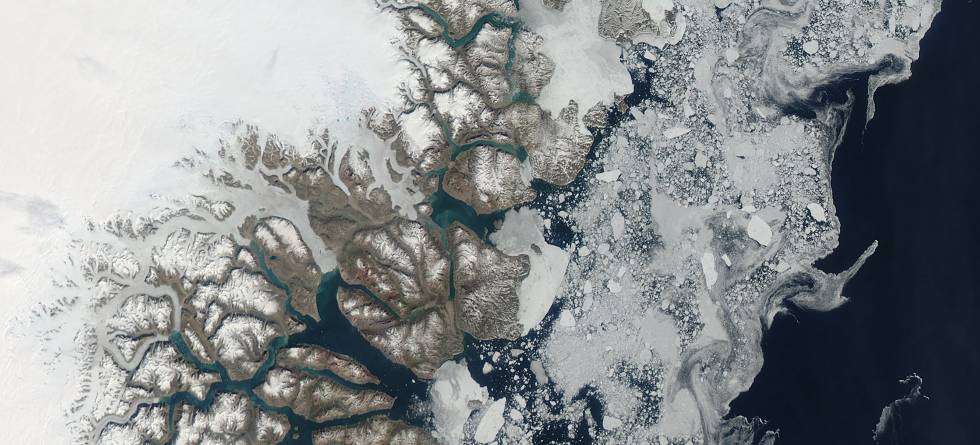Written by Henrik Sadatzki, former PhD student at the Department of Earth Sciences and Bjerknes Centre for Climate Research at the University of Bergen, and now Postdoc researcher at the Alfred Wegener Institute.
Our new study published in Proceedings of the National Academy of Sciences (PNAS) shows that widespread sea ice decline happened within 250 years or less and unleashed abrupt climate change during the last glacial period. This scientific breakthrough settles a long debate on the mechanisms for abrupt climate changes and documents that the cause for the rapidity and severity of abrupt changes during the last glacial resides in the ocean.
During the last glacial period, ~10–110 thousand years ago, the Northern Hemisphere was turned white by large ice sheets on the northern continents and extensive sea ice covering the Nordic Seas. Yet, the cold glacial climate in the north was interrupted by several abrupt climate warming events that comprised temperature rises of up to 16.5°C over the Greenland ice sheet.
These past warming events, known as Dansgaard-Oeschger (D-O) events, were discovered in Greenland ice cores decades ago but their cause has remained a matter of debate. The D-O events are also important for us living today as their speedy warming rate has recently been shown to be similar to the warming rate observed in major parts of the Arctic today, where sea ice is disappearing.
The new results published in PNAS provide robust empirical evidence that the past abrupt climate warming events were tightly linked to rapid and widespread sea ice decline in the Nordic Seas.
Our unprecedentedly comprehensive and detailed sea ice reconstruction documents the importance of rapid sea ice retreat and associated feedback mechanisms for causing abrupt climate change.
The researchers from various international institutions used two independent methods for sea ice reconstruction, combining sediment core and ice core data.
Combining sediment core and ice core data
We investigated two sediment cores from the Norwegian Sea and an ice core from East Greenland, which were linked to each other by several tephra layers (layers of ash from Icelandic volcanic eruptions) identified in both cores.
The sea ice reconstruction was based on specific organic molecules preserved in the marine sediment cores, some of which were produced by algae living in sea ice and others by algae living in ice-free water. Additionally, the research team analyzed the Bromine content in the East Greenland ice core, which originated from the presence of either seasonal sea ice or open waters in the ocean between Greenland and Norway.
The combination of the sediment core and ice core data provided a solid chronology and reinforced the reconstruction of the scale of sea ice changes in the wider Nordic Seas.
Past sea ice changes
The data we present suggest that the Nordic Seas were covered by an extensive sea ice lid during cold periods, while warmer periods were marked by a reduced seasonal sea ice cover and rather open-ocean conditions.
Our records indicate that widespread sea ice decline might have happened within 250 years or less, contemporaneously with the onset of a phase where the ocean was stirred and mixed in the Nordic Seas, leading into the onset of the abrupt atmospheric warming.
As the Nordic Seas turned rapidly from white to blue, heat released from relatively warmer ocean water to the cold atmosphere led to an amplification of the abrupt climate warming events.
The results of this study document the behavior of sea ice changes as a tipping element in the coupled ocean-ice-climate system, providing important constraints for the understanding of abrupt climate changes in the past, and is a warning that ongoing sea ice retreats may lead to similar changes in the not so distant future.
Reference
H. Sadatzki, N. Maffezzoli, T. M. Dokken, M. H. Simon, S. M. P. Berben, K. Fahl, H. A. Kjær, A. Spolaor, R. Stein, P. Vallelonga, B. M. Vinther, E. Jansen: Rapid reductions and millennial-scale variability in Nordic Seas sea ice cover during abrupt glacial climate changes. Proc. Natl. Acad. Sci. Nov 2020, 202005849; DOI:10.1073/pnas.2005849117

